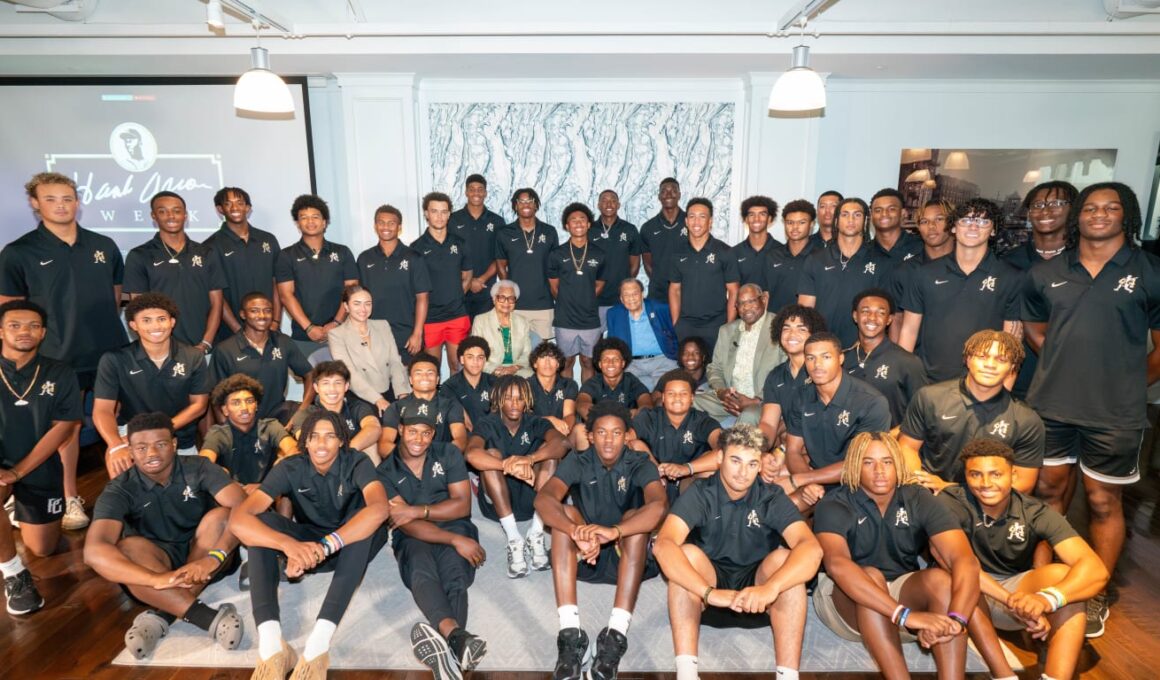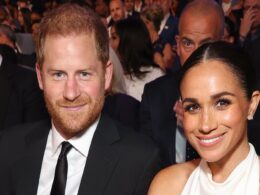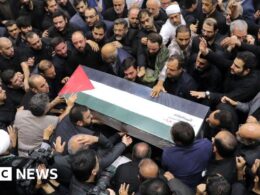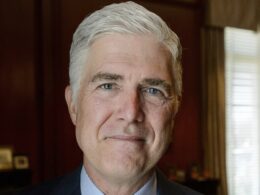Cultural Day a hit with Hank Aaron Invitational players
The 44 elite high school baseball players from the Hank Aaron Invitational did more than just display their skills in the showcase game at Truist Park in Atlanta on Saturday morning.
The previous day was the Hank Aaron Invitational Cultural Day. The young athletes received a history lesson on one of the greatest players in baseball history by taking a guided tour of the “More Than Brave: The Life of Henry Aaron” exhibit at the Atlanta History Center. On display were Aaron’s baseball cards over the years from 1954-74, trophies he won and legendary photos, especially the one when he broke Babe Ruth’s career home run record on April 8, 1974.
Later in the day, the high schoolers witnessed a panel discussion that featured people who knew Aaron the best — widow Billye Aaron, former United States ambassador Andrew Young and former teammate Dusty Baker.
The panel wanted the players to know that Aaron was more than just a great athlete. Aaron was a civil rights activist and a mentor for anybody who would listen to him.
Aaron grew up in segregated Alabama in the 1930s and ‘40s, but it didn’t leave him angry toward anybody in the state. Instead, according to Young, Aaron’s mind was his most powerful weapon to make things better around him. Never once did Aaron think about getting into a fight to solve his problems.
“He was generous with his time. He cared about everybody regardless of race, creed and religion,” Baker said. “He helped me tremendously. He helped all of my teammates. If you went to him — and as long as you were trying to go in a positive direction — he would help anybody.”
Young remembers when Aaron invited him and some friends to dinner during the late 1960s. In attendance was a young Baker and his mother, Christine, who wanted to make sure her son was safe in Atlanta.
“His mama hooked [Dusty] up and said to Hank, ‘I want you to take care of my baby.’ Dusty was as big then as he is now. But he was her baby,” Young remembered.
Billye Aaron wanted the young ballplayers to know her husband helped popularize the game of baseball when he competed in a home run derby against Japan’s home run king, Sadaharu Oh, on Nov. 4, 1974. Aaron won the contest, 10-9, in front of a large crowd at Korakuen Stadium and millions of television viewers worldwide.
“Kids from all over Japan attended the games that were held there,” Billye Aaron said. “It became such a hit. … It increased the interest in baseball in Tokyo, and it’s one of the favorites — if not the favorite sport in all of Japan. You will find a lot of [Shohei] Ohtanis in Japan.”
Young also reminded the high schoolers that Aaron was a businessman and philanthropist. After his playing days ended after the 1976 season, Aaron’s Chasing the Dream Foundation was established in 1995 with the goal of helping children between the ages of 9 and 12 realize their dreams. The foundation has provided grants to more than 755 children, or “Dream Chasers,” in six cities across the country, enabling them to seek advanced study in music, art, writing, dance and sports.
Through the support of Major League Baseball, the foundation transitioned into the Hank Aaron Chasing the Dream “44 Forever” program, honoring Aaron’s retired Braves jersey number. The program annually provides financial assistance to 44 young people with limited opportunities so they can further develop their talents and pursue their dreams, exclusively at Boys & Girls Clubs across the country.
“Hank Aaron did [all] that, but it was automatic,” Young said. “Nobody had to teach him that. Well, his mama probably taught him. It was that solid rock of character that will make you a success in anything you do.”
The 44 high school players — a number that pays homage to the one worn by Aaron throughout his Hall of Fame career — didn’t just sit and listen. They had questions for the panel and most of them went to Baker. It wasn’t all about Aaron. One of the players wanted to know Baker’s favorite player to manage. Baker said that former outfielder Willie McGee, who played for Baker in 1993-94 when both were with the Giants, was on the top of the list.
“He is my son’s godfather,” Baker said. “The role of godfather means a lot because he is supposed to take care of my son if something happens to me. I say Willie McGee because he is honest, straightforward. He likes to make you laugh and have a good time. Plus, he came to play every day. But I’ve had some great ones.”
One of the kids asked Baker about Aaron’s training habits, which were second to none, according to Baker. While Baker would play basketball for an hour, Aaron would go to the same gym and play handball and racquet ball with a medicine ball. He always had handgrips to make his hands stronger.
“These are the common traits that I see when these guys go the extra mile,” Baker said. “Hank believed in nutrition. He always believed in rest. He is the first guy that told me to eat your big meal at noon. Make sure you go to the bathroom right before the game and you take care of yourself. He played 150 games for [a lot of] years in a row. That’s dedication, desire and mind power.
“Another thing he told us to do was to play with pain. He taught us to think away pain. I used to see this guy come in with his sciatica bothering him and looking like Fred Sanford. I said, ‘Oh man, Hank can’t play today.’ The game would start and he’d run around like Bob Hayes. Then after the game, he would look like Fred Sanford again. That’s because he had that mind power and knew what was coming all the time. This guy, he studied.”









